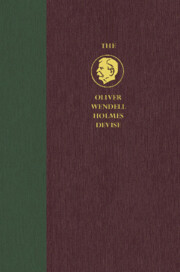Book contents
- The Hughes Court
- The Oliver Wendell Holmes Devise History of the Supreme Court of the United States
- Additional material
- Additional material
- The Hughes Court
- Copyright page
- Contents
- Acknowledgments
- Preface
- Table of Cases
- Introduction
- Part I The Opening Years
- Part II Continuities
- Section A: Administrative Law
- Section B: Civil Liberties and Civil Rights
- Chapter 23 The Uncertainties of Theory
- Chapter 24 Progressivism, Prohibition, and Organized Crime
- Chapter 25 Race, Criminal Justice, and “Labor Defense”
- Chapter 26 Race and Strategic Litigation
- Chapter 27 The Hughes Court and Radical Political Dissent
- Chapter 28 The Hughes Court and Radical Religious Dissent
- Section C: Justiciability
- Part III New Approaches Begin to Emerge
- Historiographical Essay
- Index
Chapter 25 - Race, Criminal Justice, and “Labor Defense”
from Section B: Civil Liberties and Civil Rights
Published online by Cambridge University Press: 13 January 2022
- The Hughes Court
- The Oliver Wendell Holmes Devise History of the Supreme Court of the United States
- Additional material
- Additional material
- The Hughes Court
- Copyright page
- Contents
- Acknowledgments
- Preface
- Table of Cases
- Introduction
- Part I The Opening Years
- Part II Continuities
- Section A: Administrative Law
- Section B: Civil Liberties and Civil Rights
- Chapter 23 The Uncertainties of Theory
- Chapter 24 Progressivism, Prohibition, and Organized Crime
- Chapter 25 Race, Criminal Justice, and “Labor Defense”
- Chapter 26 Race and Strategic Litigation
- Chapter 27 The Hughes Court and Radical Political Dissent
- Chapter 28 The Hughes Court and Radical Religious Dissent
- Section C: Justiciability
- Part III New Approaches Begin to Emerge
- Historiographical Essay
- Index
Summary
Progressive ambivalence about rights in general, and their indifference to issues of racial justice, might have led to inattention to issues of race at the Supreme Court. It did not, because of the complicated relation between liberalism in politics, conservative libertarian impulses, and the depth of outrage at gross injustices in the cases that reached the Court. Most notable were the Scottsboro cases, where the Communist Party outmaneuvered the NAACP to gain control, and then used the cases as part of a strategy of “labor defense,” mobilizing large numbers of people to place pressure on the courts, as the theory had it. The theory, though, was at war with itself: According to it, courts were tools of capitalist oppression but could be brought to heel by a mobilize public even if capitalism remained in place.
Keywords
- Type
- Chapter
- Information
- The Hughes CourtFrom Progressivism to Pluralism, 1930 to 1941, pp. 610 - 647Publisher: Cambridge University PressPrint publication year: 2022

